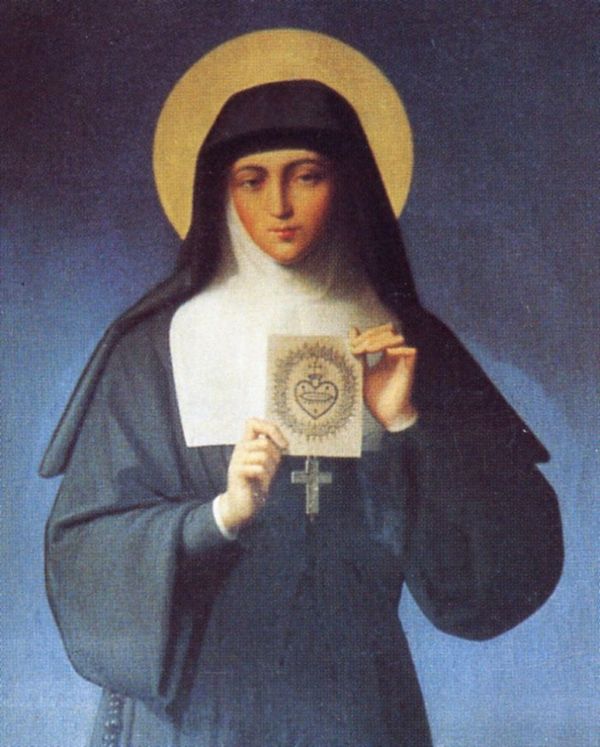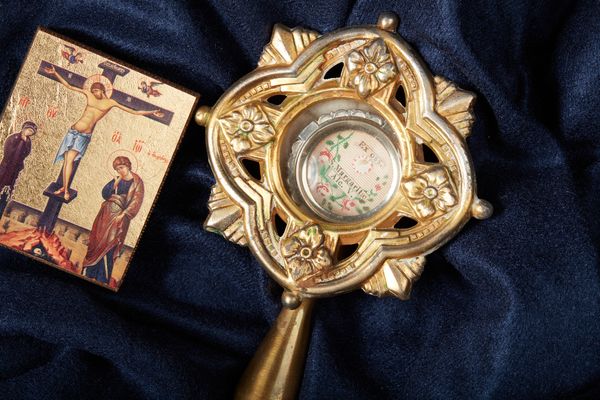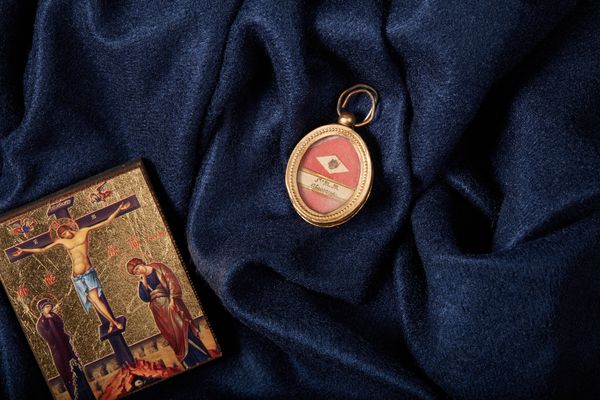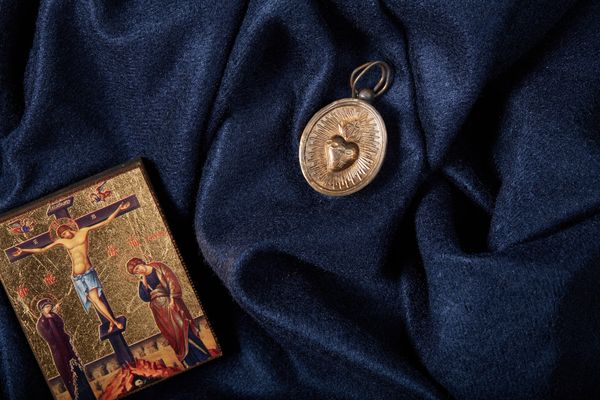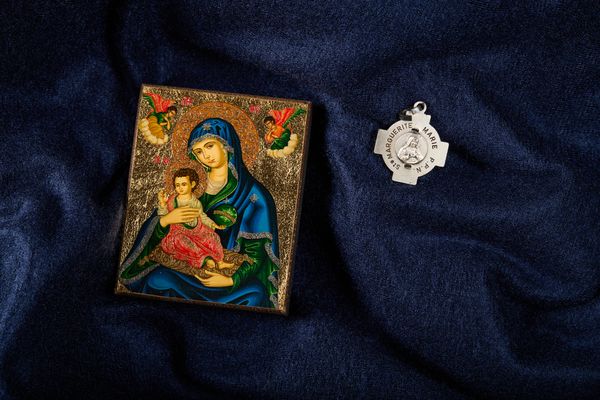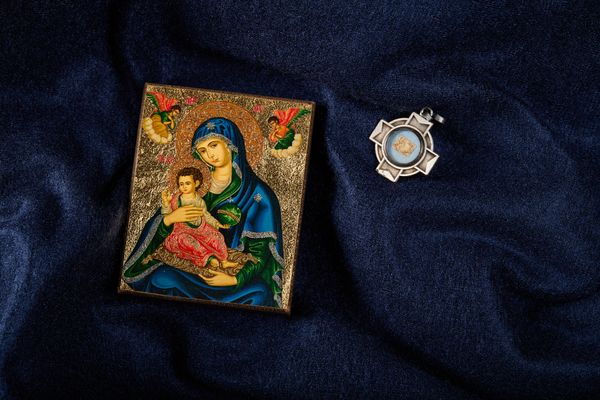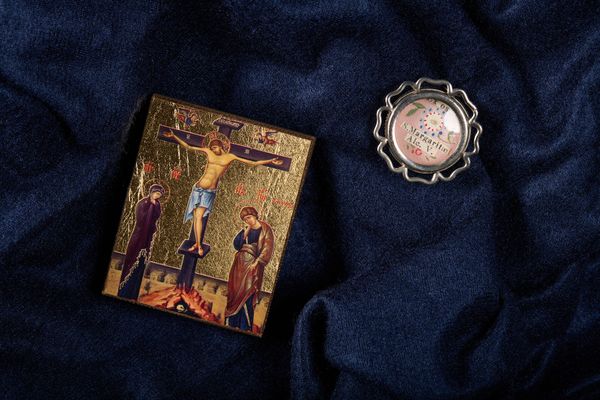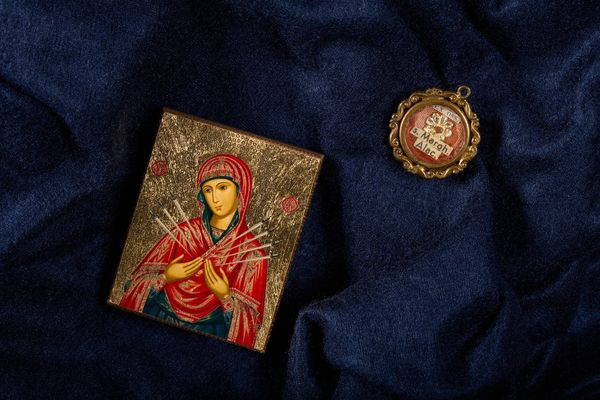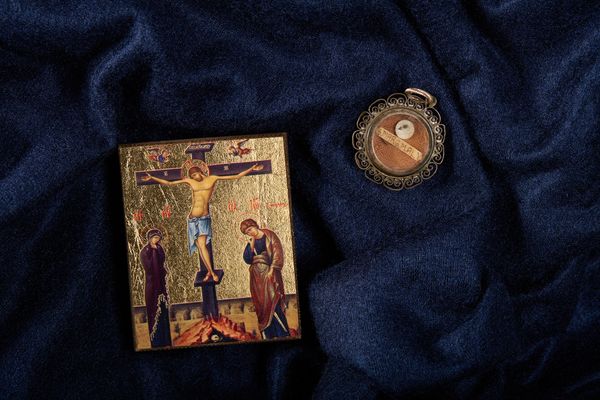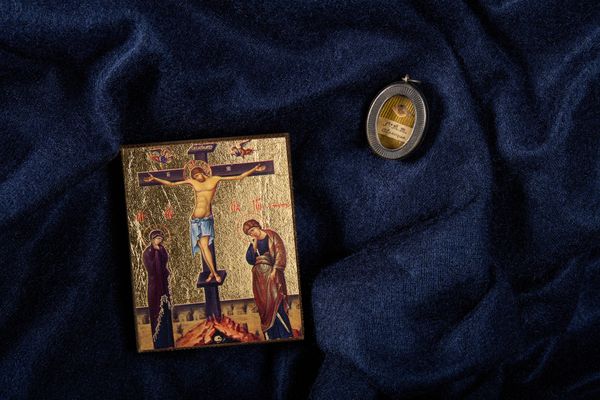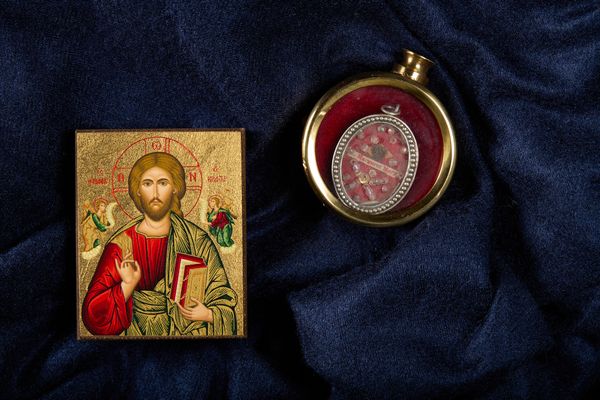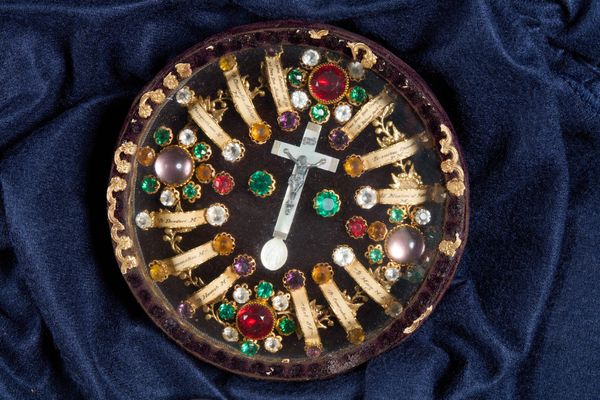Alacoque was born in 1647 in L'Hautecour, Burgundy, France, now part of the commune of Verosvres, then in the Duchy of Burgundy. She was the fifth of seven children, and only daughter of Claude and Philiberte Lamyn Alacoque. Her father was a well-to-do notary. Her godmother was the Countess of Corcheval. Margaret was described as showing intense love for the Blessed Sacrament from early childhood.
When Margaret was eight years old, her father died of pneumonia. She was sent to a convent school run by the Poor Clares in Charolles, where she made her First Communion at the age of nine. She later contracted rheumatic fever which confined her to bed for four years. At the end of this period, having made a vow to the Blessed Virgin Mary to consecrate herself to religious life, it is said she was instantly restored to perfect health. In recognition of this favor, she added the name "Mary" to her baptismal name of Margaret. According to her later account of her life, she had visions of Jesus Christ, which she thought were a normal part of human experience and continued to practice austerity.
One night, after returning home from a ball for Carnival dressed in her finery, she experienced a vision of Christ, scourged and bloody. He reproached her for her forgetfulness of him; yet he also reassured her by demonstrating that his heart was filled with love for her, because of the childhood promise she had made to his Blessed Mother. As a result, she determined to fulfill her vow and entered, when almost 24 years of age, the Visitation Convent at Paray-le-Monial on 25 May 1671, intending to become a nun.
At the monastery, Alacoque reportedly received several private revelations of the Sacred Heart, the first on 27 December 1673 and the final one 18 months later. The visions revealed to her the form of the devotion, the chief features being reception of Holy Communion on the first Friday of each month, Eucharistic adoration during a "Holy hour" on Thursdays, and the celebration of the Feast of the Sacred Heart. She stated that in her vision she was instructed to spend an hour every Thursday night in meditation on Jesus' Agony in the Garden of Gethsemane. The Holy Hour practice later became widespread among Catholics.
She eventually received the support of Claude de la Colombière, the community's confessor for a time, who declared that the visions were genuine. In 1683, opposition in the community ended when Mother Melin was elected Superior and named Margaret Mary her assistant. She later became Novice Mistress,and saw the monastery observe the Feast of the Sacred Heart privately, beginning in 1686. Two years later, a chapel was built at Paray-le-Monial to honor the Sacred Heart. Observation of the feast of the Sacred Heart spread to other Visitation convents.
Canonization
After Alacoque's death, the devotion to the Sacred Heart was fostered by the Jesuits even as it remained controversial within the Catholic Church. The practice was not officially recognized for 75 years.
The discussion of Alacoque's own mission and qualities continued for years. All her actions, her revelations, her spiritual maxims, her teachings regarding the devotion to the Sacred Heart, of which she was the chief exponent as well as the apostle, were subjected to the most severe and minute examination. The Sacred Congregation of Rites eventually recognized her heroic virtues, granting her the title "servant of God". In March 1824, Pope Leo XII pronounced her venerable and on 18 September 1864 Pope Pius IX declared her blessed. When her tomb was opened in July 1830, two instantaneous cures were recorded. Her body rests above the side altar in the Chapel of the Apparitions, located at the Visitation Monastery in Paray-le-Monial, which draws pilgrims from all parts of the world.
Alacoque was canonized by Pope Benedict XV in 1920, and in 1929 her liturgical commemoration was included in the General Roman calendar for celebration on 17 October, the day of her death. In the reforms of 1969, the feast day was moved to 16 October. It is an optional memorial in the United States.
Join Us On First Fridays
Join the Knights of Columbus Bishop Becker council 2427 the first Friday of every month for a devotion to the Sacred Heart of Jesus following the 8:30AM Mass at Immaculate Conception Church in Elkton. Our brother Knights come together with our parish and all other members of the mystical body of Christ celebrating this devotion. All are welcome and encouraged to join us.
